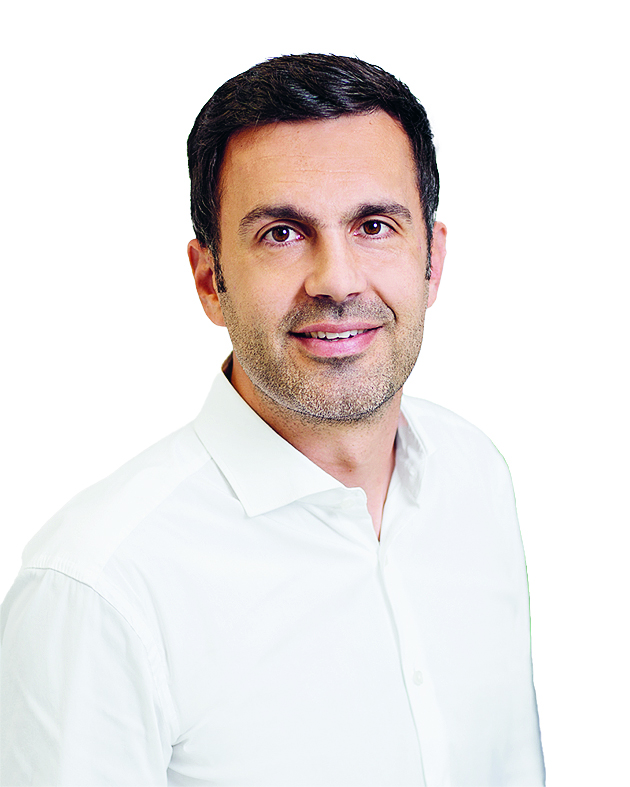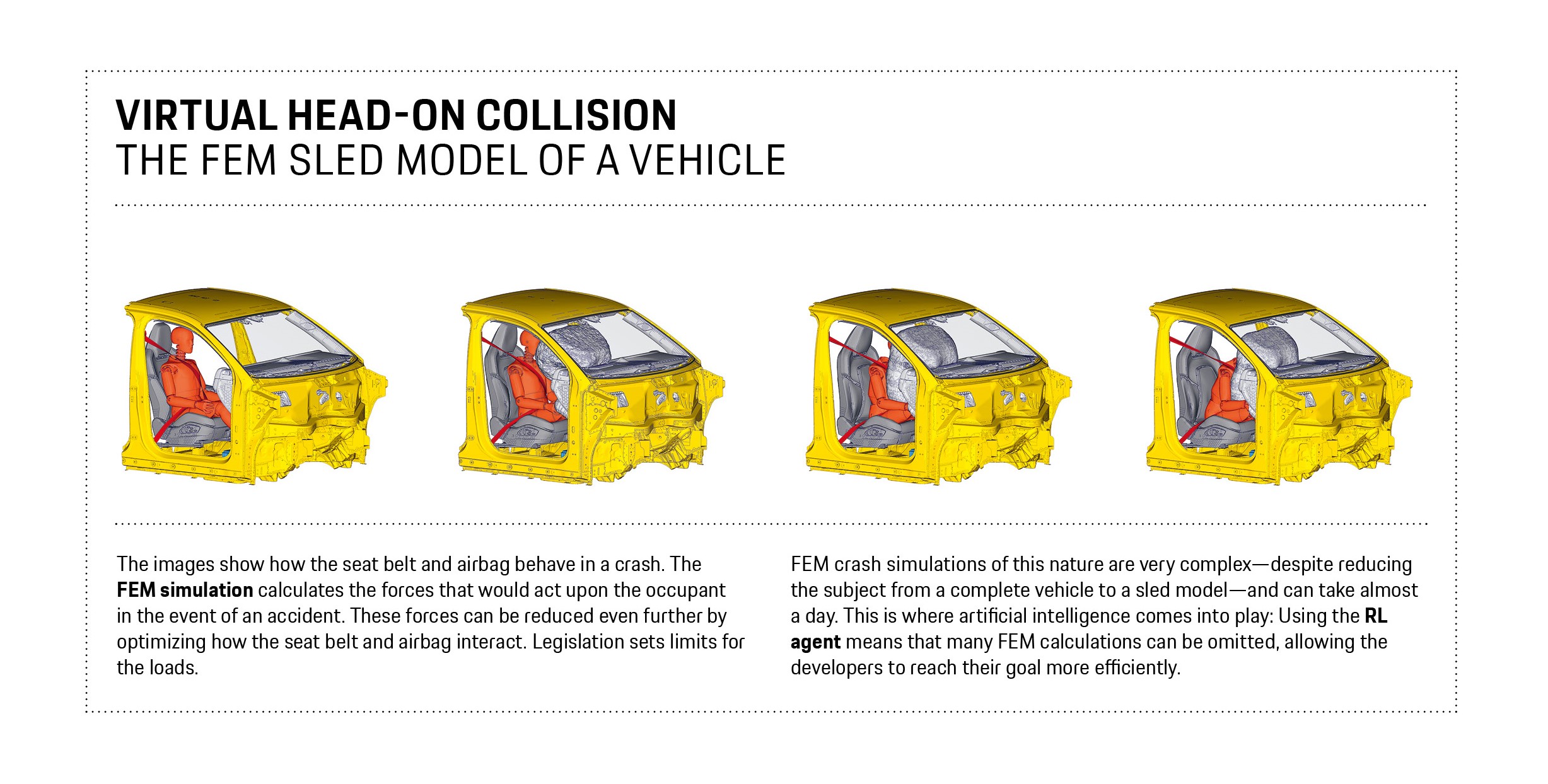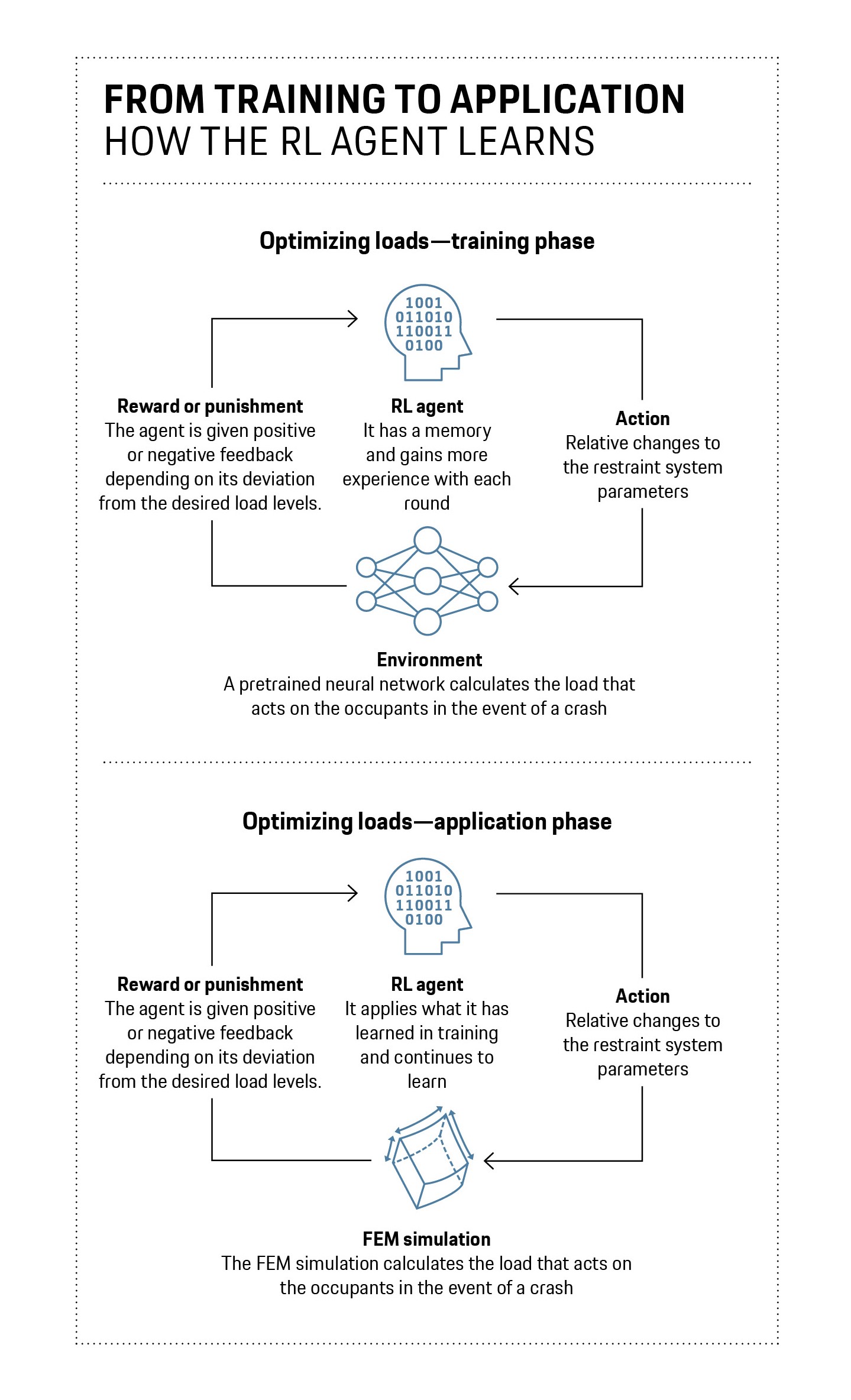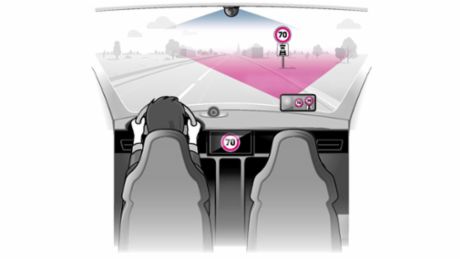Artificial intelligence is finding its way into more and more areas of life. A simple formula applies to this: The more complex a task is, the greater the potential that can be leveraged by the targeted use of AI. “At Porsche Engineering, we started integrating AI applications into our development processes at a very early stage. Pilot projects thus convinced us of the great potential that arises when we combine classic development methods with modern AI,” explains Dr. Joachim Schaper, Senior Manager AI and Big Data at Porsche Engineering.
Learning through permanent feedback
Porsche Engineering has gained experience integrating modern AI applications into the development process in a universal application strategy for internal combustion engines, for vibration damping in the powertrain of an electric vehicle and in developing the crash structure of a side skirt. The developers used the AI method Reinforcement Learning (RL) for these projects. With this method, a virtual agent interactswith an environment and constantly learns through feedback—by being rewarded with bonus points for actions that lead to a good result and being penalized with deductions for failures. The feedback required for the RL agent during the training phase is provided by a neural network.
“Due to the excellent results achieved using the AI methods—the results are usually available after a few seconds, in contrast to hours for a conventional simulation—we are working on deploying AI across a broad spectrum in the future and establishing it as a permanent component of our development processes,” says Schaper. Another example of the AI offensive at Porsche Engineering is the design of restraint systems in the field of passive safety. In the event of a crash, these components must be optimally suited to the vehicle. This is the only way they can provide the occupants with maximum protection. To do this, for example, the restraining forces of the belt must be tuned to the effect of the airbag.
“All components interact with each other and must be considered within the overall system during optimization. A large number of load cases must also be taken into account. This makes passive safety development extremely complex and time-consuming,” explains Michael Di Roberto, Senior Manager CAE & Safety at Porsche Engineering.
Crash simulations take up to 72 hours
The AI method that has already been tried and tested for side skirt optimization has been further advanced to aid design of the restraint systems. “The first project focused on training the agent and demonstrated the great potential of the applied methodology. This is why AI will now be used in the series development process for restraint systems in the future,” as Schaper states. In order to achieve this, the agent was linked to a classic simulation tool once it had successfully completed the training. The tool is based on the finite element method (FEM), which does provide accurate results, but whose use is very time-consuming: A crash simulation with today’s model dimensions can take up to 72 hours. Thanks to the upstream selection carried out by the RL agent, significantly fewer FEM calculations are required to achieve the appropriate result, which reduces costs and the time input.
“In this realworld development task we were able to reduce the number of FEM calculation loops required by 80 percent,” says Janis Mathieu, a PhD student at Porsche Engineering. “Our vision is that, in the future, efficient and automatable concepts for which engineers simply need to monitor multiple agents will accelerate the development process in a sustainable way.”
Overall system maturity will increase as a result, which will reduce both the number of complex physical crash tests and the number of prototype vehicles required. “In the long term, we will be able to exploit further efficiency potentials, as future product generations will be optimized on the basis of the preceding generations,” says Di Roberto. Once the decision strategy of the RL agent has been learned, it can be flexibly transferred to new model variants as long as the basic task is comparable.
“In addition to the time required for the learning process, the time taken to develop entire FEM submodels could also be saved in the future.” Using artificial intelligence to prepare simulation data in what is known as post-processing also saves time when it comes to developing passive security systems. “Modern simulation tools calculate a crash with a very high level of detail. However, this also produces a lot of data for the engineers to interpret,” says Di Roberto. While artificial intelligence was upstream of the simulation steps in the AI projects previously pursued by Porsche Engineering, in post-processing it is only deployed after the simulation. The type of algorithm used for this is called explainable AI. The task of this algorithm is to identify complex relationships in a dataset and to make them visible to the developer. Dependencies can be determined locally (at simulation level) and globally (at dataset level). This is how AI assists development engineers in interpreting the simulation results.
“The use of explainable AI puts a compass in the hands of engineers and allows them to navigate the increasingly complex and extensive dataset of modern simulations,” explains Mathieu. One example of where such a large volume of data is generated is robustness analyses in passive vehicle safety. Stefan Kronwitter, a PhD student at Porsche AG in the field of body system development and who is focusing on vehicle safety, is working with Janis Mathieu on deploying explainable AI methods in analyzing crash simulations. “Explainable AI can be used to determine—in a short period of time—the cause variables that lead to conspicuous behavior within individual simulations,” says Kronwitter.
A supplement to FEM simulations
An initial version of the explainable AI-based analysis is currently being integrated into the series processes for crash calculation at Porsche Engineering, and further applications are to follow. “Explainable AI lays the foundation for optimizing all systems that require deep understanding. In addition to passive safety, this also includes parameter studies for lightweight construction or driving dynamics,” says Schaper. Despite all the progress made in the field of AI, however, the following still applies: FEM simulations will remain an essential part of development processes in the future. The digitalization of processes and the complexity of the systems will lead to more simulation—and more accurate simulation—which will make AI support unavoidable in this area, too. “Porsche Engineering has a deep understanding of series development processes and methods, and has been involved in developing and applying AI methods for many years,” explains Schaper.
Info
Text first published in the Porsche Engineering Magazine, issue 2/2024.
Text: Richard Backhaus
Copyright: All images, videos and audio files published in this article are subject to copyright. Reproduction in whole or in part is not permitted without the written consent of Dr. Ing. h.c. F. Porsche AG. Please contact newsroom@porsche.com for further information.






